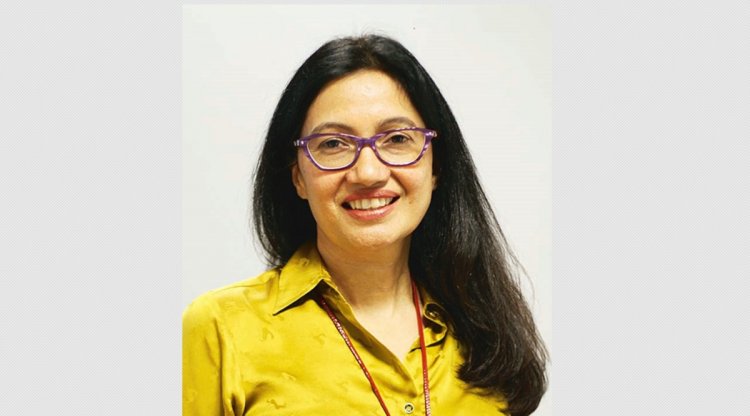2022 – Year Ahead: Tech-powered prescription for healthcare is key
Four technologies— ubiquitous computing, cloud-to-edge infrastructure, pervasive connectivity and artificial intelligence— will drive new solutions to our biggest challenges

By Nivruti Rai
A wave of innovations across different sectors marked 2021 and it was driven by unprecedented, far-reaching, pandemic-accelerated digitalisation. For obvious reasons, healthcare witnessed significant transformation through technology creation and adoption. The development and distribution of coronavirus vaccines is the most noteworthy, but so too did tele-health innovation and remote diagnostics alter the way we think about treatment.
India has one of the highest vaccination rates globally, and the path is laid-out for its economic recovery. However, we can expect to see some challenges on the way. In that context, fast-paced tech innovation will be absolutely critical for the economy to continue its momentum. In 2022, four technology superpowers—ubiquitous computing, cloud-to-edge infrastructure, pervasive connectivity and artificial intelligence (AI)—will drive new solutions to our biggest challenges. Semiconductor will continue to fuel this technology-led transformation.
Here’s what impact we can expect such innovations to have over the next year.
AI and seamless cloud-to-edge data democratises healthcare
AI is making healthcare more connected, affordable, and personalised. New advancements are enabling clinicians to gather more comprehensive data and increase efficiencies and collaboration, all while reducing costs. This is happening right now with the outbreak of Omicron variant as genome sequencing of affected people is shared on publicly available databases.
India has one of the largest diabetic populations in the world, expected to reach 98 million cases by 2030. Diabetic retinopathy (DR) is a leading cause of vision loss among adults. With AI, we can advance the diagnosis of DR with the accuracy level of humans and enable timely treatment too. One cloud-based AI solution is using deep learning models to identify retinal conditions and detect DR quickly. This helps doctors provide instant counsel for patients.
In 2022, we can expect an acceleration in AI to assess huge volumes of health data at lower cost. This covers everything from more accurate cancer diagnostics to predictive analytics. India’s NASSCOM Covid-19 taskforce used AI to deliver a population-scale pandemic response platform to the state governments of Telangana and Karnataka—parsing massive datasets to guide on Covid-19 indicators to predict outbreaks and manage care more effectively.
AI-driven vehicles enhance road safety, reduce air pollution
Technologies such as AI will play a transformational role in enabling smarter and safer vehicles, roads and drivers. Unfortunately, India sees about 17 deaths due to road accidents every hour. Innovative solutions based on collision avoidance systems (CAS) and Advanced Driver Assistance System (ADAS) can reduce such fatalities and enable road safety in India.
In addition, intelligent, cloud-to-edge-connected, 5G-enabled automobiles have the potential to significantly improve India’s air quality. Then, AI-based vehicles delivering real-time data on traffic, road conditions, and parking spaces, could also reduce fuel consumption, cut daily commute times, and make parking more efficient. These benefits combined would be an important step in reducing vehicular emissions and curbing air pollution in Indian cities.
Neuromorphic computing mimics human cognition
In 2022, we are likely to see further development of the next generation of AI: neuromorphic computing. Using insights from neuroscience to imitate human cognition in machines, when applied successfully, neuromorphic computing has the potential to create programs that can simulate and even exceed the capabilities of humans.
The National University of Singapore has developed an artificial skin which enables robots to detect touch 1,000 times faster than a human. The system is so advanced that it can identify the shape, texture, and hardness of objects 10 times faster than the blink of an eye (that’s 30-40 milliseconds). The researchers believe that eventually this work could improve human-robot interaction, making use cases such as caregiving robots and automated robotic surgery more feasible.
As per WHO data, in 2019 there were 9.28 doctors per 10,000 people in India, compared to 26.04 in the USA. The healthcare applications of neuromorphic computing would therefore be a lifeline for India’s understaffed healthcare system.
Technology innovations enrich lives and livelihoods
Technology by itself is lifeless unless it benefits the lives and livelihoods of humanity. And, tech has never been more important to humanity than it is today. The challenges we are facing are truly existential and we cannot afford to slow down the pace of innovation. In the coming year, powered by AI, cloud-to-edge infrastructure, pervasive connectivity, and ubiquitous computing, we can apply truly world-changing technology to fuel India’s post-pandemic recovery, augment efficiencies, reduce pollution and enrich the lives of people.
The writer is country head, Intel India & VP, Intel Foundry Services







